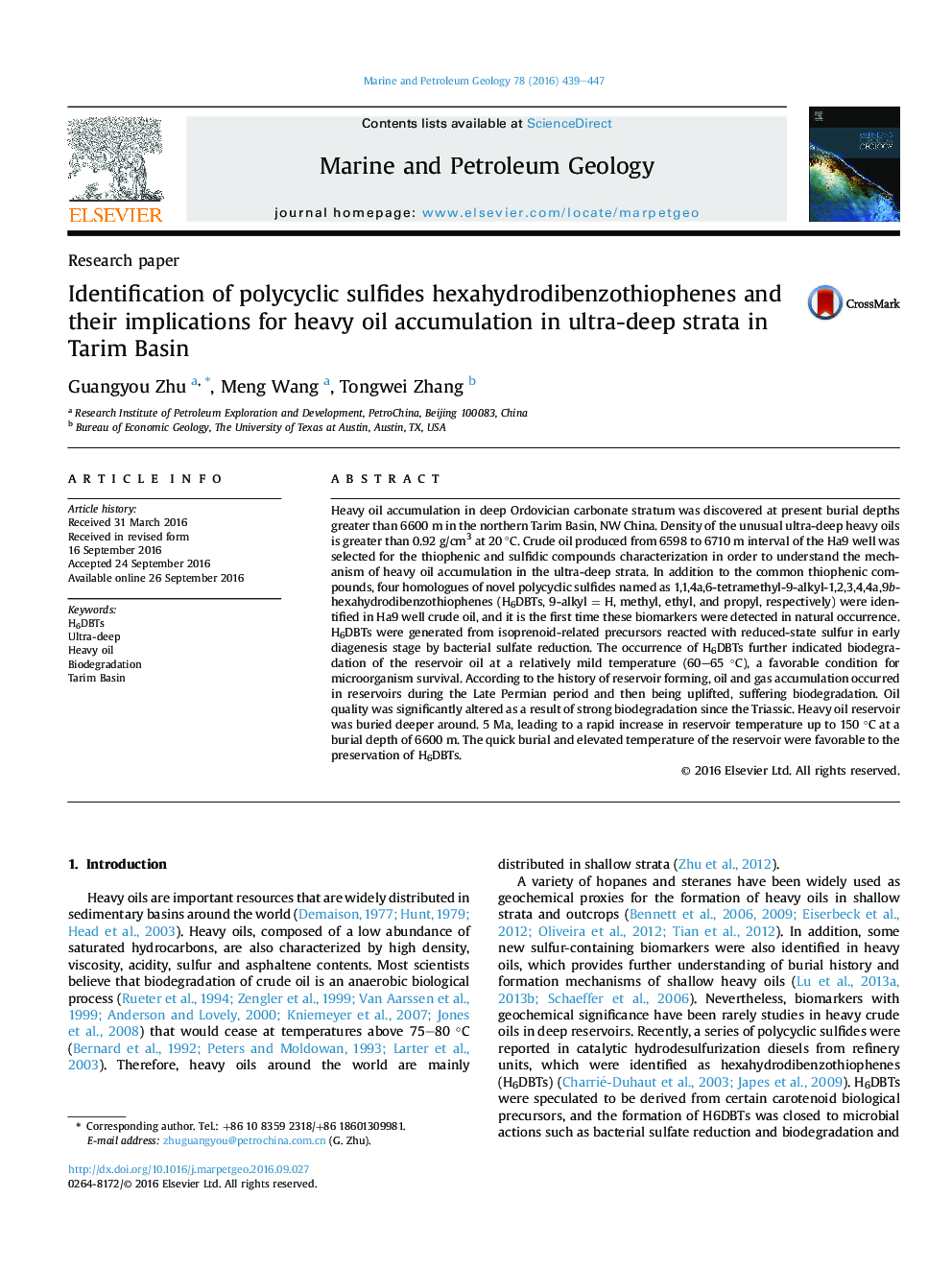| Article ID | Journal | Published Year | Pages | File Type |
|---|---|---|---|---|
| 6434399 | Marine and Petroleum Geology | 2016 | 9 Pages |
â¢Novel polycyclic sulfides H6DBTs were determined in ultra-deep heavy crude oil for the first time.â¢H6DBTs have recorded the early biodegradation and very recent deep burial of the paleo-reservoir.â¢Quick late burial and temperature rising provided preservation conditions for H6DBTs.â¢Large heavy oil reservoir in deep strata with depths over 6600 m.
Heavy oil accumulation in deep Ordovician carbonate stratum was discovered at present burial depths greater than 6600 m in the northern Tarim Basin, NW China. Density of the unusual ultra-deep heavy oils is greater than 0.92 g/cm3 at 20 °C. Crude oil produced from 6598 to 6710 m interval of the Ha9 well was selected for the thiophenic and sulfidic compounds characterization in order to understand the mechanism of heavy oil accumulation in the ultra-deep strata. In addition to the common thiophenic compounds, four homologues of novel polycyclic sulfides named as 1,1,4a,6-tetramethyl-9-alkyl-1,2,3,4,4a,9b-hexahydrodibenzothiophenes (H6DBTs, 9-alkyl = H, methyl, ethyl, and propyl, respectively) were identified in Ha9 well crude oil, and it is the first time these biomarkers were detected in natural occurrence. H6DBTs were generated from isoprenoid-related precursors reacted with reduced-state sulfur in early diagenesis stage by bacterial sulfate reduction. The occurrence of H6DBTs further indicated biodegradation of the reservoir oil at a relatively mild temperature (60-65 °C), a favorable condition for microorganism survival. According to the history of reservoir forming, oil and gas accumulation occurred in reservoirs during the Late Permian period and then being uplifted, suffering biodegradation. Oil quality was significantly altered as a result of strong biodegradation since the Triassic. Heavy oil reservoir was buried deeper around. 5 Ma, leading to a rapid increase in reservoir temperature up to 150 °C at a burial depth of 6600 m. The quick burial and elevated temperature of the reservoir were favorable to the preservation of H6DBTs.
